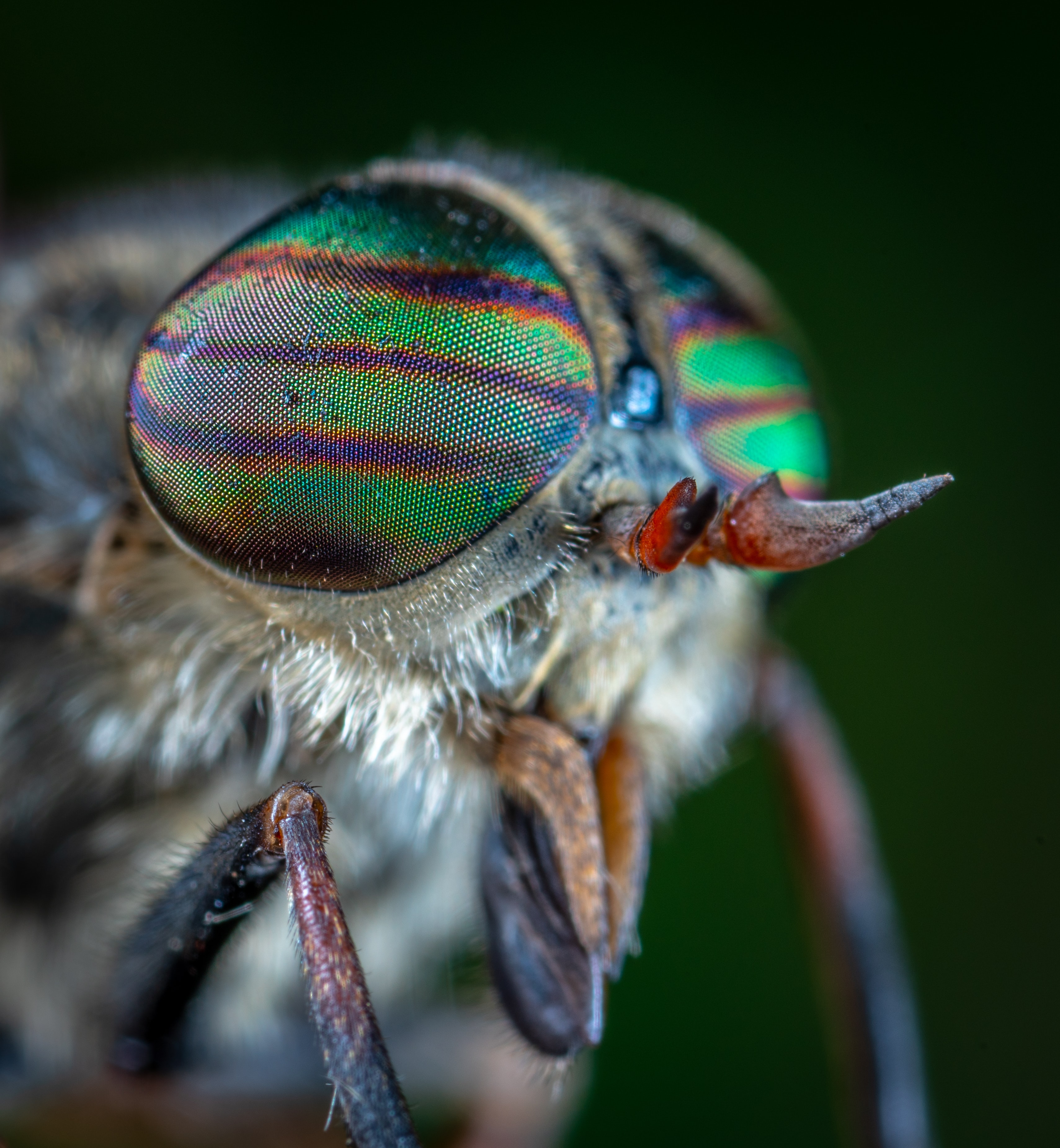It was a surprise to read in the September 17 issue of Nature1 that fruit flies have some interesting things to teach us in the field of technological applications of extremely thin protective coatings.
For this story, we focus on their beautiful red eyes. Like all insects, fruit flies have compound eyes consisting of multiple miniature light receptors which focus on one spot at the back of the eye. We immediately notice that these compound eyes tend to bulge outward, or at least they are highly exposed. There are no eyelids to protect them from damage and/or to protect them from glare. It was back in the 1960s and 1970s that biologists began to notice that insect eyes seem to have some protection after all. Depending upon the lifestyle of the insect, their eyes seem to have anti-reflective or anti-adhesive protection. An anti-reflective coating allows more light to be transmitted through a transparent layer than would normally occur. And an anti-adhesion coating repels water from such a surface.
Apparently, there are many applications in industry where artificial nanocoatings are essential. [Anything on a nano scale is almost down to the level of individual molecules.] These applications include electronics, automotive, marine, aerospace and medical devices.3 Unfortunately, current industrial and commercial nanocoating technologies exhibit limited versatility and they use non-eco-friendly methods and materials.2 However, work with insect eyes, and specifically the eyes of Drosophila species, reveal a world of highly versatile, stable and eco-friendly nanocoatings. This study “identifies how multifunctional nanocoatings are created in nature and translates this knowledge into technological applications.”2 Apparently the fruit flies effortlessly manufacture the kinds of products that industry expects to spend about fourteen billion dollars to obtain by 2027.3
It was partly to understand the biology of insects, and partly to learn how to expedite the industrial production of surface nanocoatings, that this project on Drosophila eyes was initiated. Apparently, this fly inhabits a wide variety of habitats, everything from tropical forests, to deserts, to volcanic islands. This scientific team, from Switzerland and Russia, studied fourteen species of Drosophila including our favourite Drosophila melanogaster. Depending on the lifestyle of each species, the coatings on the lenses of the compound eyes varied from more anti-reflective to more anti-adhesive. Interestingly, the insect eye nanocoatings appear in the developing embryo before the rest of the eye appears.4
When they examined all these fly species, the scientists discovered that the nanocoatings exhibited different surface textures. The anti-reflective surfaces exhibited nipple-like protrusions, whereas the anti-adhesive surfaces exhibited ridges or even maze-like structures built from the nipples. The scientists had expected that these different patterns would reflect what they assumed to be lines of descent of the different species (taxonomic subgroupings). This would be in keeping with evolutionary expectations. However, to their surprise, they found that the surface exhibited by each species instead reflected their lifestyles, and not according to genetic relationships.
Obviously, the fruit flies exhibit skills for manipulating nanocoatings that technologists do not possess. The current scientific team then adopted a hypothesis that the diversity of surface textures in these coatings is the result of pattern development. Alan Turing (1912-1954) had proposed that a reaction-diffusion process can explain a lot of patterns observed in biology. Most of the observed patterns are much larger however. These include spatially periodic patterns such as spots or stripes, hexagons, or spirals that we might see on animal skins. The corneal coatings in insect eyes is the first case where the Turing process is proposed for a nanoscale phenomenon.
Turing’s idea envisages two compounds which mix together. The idea is that these substances diffuse into each other while at the same time interacting and changing their properties as they proceed. The interaction between two substances is what produces the pattern. In the case of the insect eyes, the more of the activator there is, the more nipples the nanocoating will exhibit (with better light transparency). The more inhibitor there is, the less transparent the coating will be, but the better it will be at repelling water. With this model in mind, the team set out to discover the identity of compounds which constitute the coating of the fruit fly eyes. One of the reasons that these scientists chose fruit flies was that the genomes of these insects have been fully sequenced.
The scientists began to look through the nucleotide sequences in each species’ DNA to look for products connected to eye biology. They suspected that the two compounds might be a protein and a wax. They were unable to identify the exact wax, but they did identify the protein. Retinin is an “unstructured protein” with no specific folding pattern until it interacts with a wax. Then, depending upon the composition of the wax, and the proportion of wax to protein, the nanolayer exhibits a more nippled surface or a more ridged surface. Thus, they concluded that “retinin and wax lipid(s) are the two components that jointly regulate the formation and the type of corneal nanostructure in Drosophila flies.”5 [p. 387] Additionally they suspect that the induced folding of retinin by the wax leads to changes in the properties of the protein. By mixing the protein with different waxes and in different proportions, the team found that they could produce all sorts of patterns. Their bio-inspired nanocoatings were stable, withstanding intensive washing. Thus, they declared “Diverse nanocoatings result in diverse functions.”3
Through this study, these scientists have demonstrated a way to produce protective coatings which are thin, effective, resistant to damage and very economical. Once again technologists find that they can improve their designs by learning from the Creation. Alan Turing did not invent such processes, he merely hypothesized how natural patterns might develop. The interesting thing is that the insect world already applies such relationships and processes in order to produce precise products. Who knew that the fruit flies zinging around your kitchen, enjoy the benefit of high tech sunglasses. Now for sure, my friends will revise their negative opinions of these flies with the beautiful eyes!
Citations:
- Mikhail Kryuchkov, Oleksii Bilousov, Jannis Lehmann, Manfred Fiebig, and Vladimir L. Katanaev. 2020. Reverse and forward engineering of Drosophila Nature 585: 383-389.
- 383.
- 388.
- 384.
- 387.
Margaret Helder
December 2020
Subscribe to Dialogue







